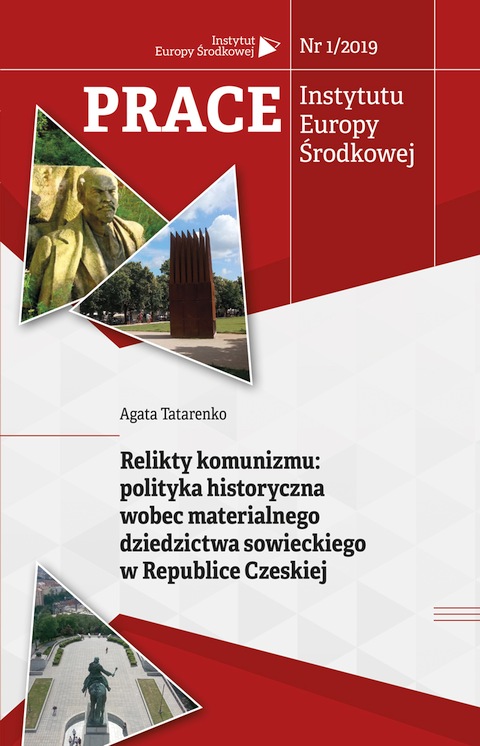„Prace IEŚ”: Relikty komunizmu: polityka historyczna wobec materialnego dziedzictwa sowieckiego w Republice Czeskiej [The Relics of Communism: Historical Policy Towards Soviet Material Heritage in the Czech Republic] by Agata Tatarenko – the first volume of the Prace IEŚ series has been published.
Editors: Beata Surmacz, Tomasz Stępniewski
The paper is an attempt to describe and explain the solutions applied in the Czech Republic to the material heritage of the Soviet Union in the last 30 years. The strategies adopted by the Czech authorities and the Czech society will be described. Since the replacement of the symbols of a bygone era with new
ones was an important element in the desovietisation of public space, there will also be references to this issue. This will allow us to draw conclusions about the Czech historical policy: determination of its actors, tools and positions of the authorities in relation to the Soviet heritage. The Czech historical policy towards the material heritage of the Soviet Union Has not been uniform, consisting of many scattered activities. Therefore, the memory discourse was not dominated by one of the subjects. It is worth noting the involvement of, in particular, local communities and artistic circles, whose initiatives often changed the significance of the monuments and memorials created in the territory of the present-day Czech Republic during the period of popular democracy and, as a result, neutralised the burden of the past. At the same time, this approach has resulted in the gradual forgetting about the role of Czech society in building a system of popular democracy. Symbolic (and not only) desovietisation was carried out in the Czech Republic under the slogan “Return to Europe”. Activities undertaken in relation to Soviet material heritage, carried out by representatives of Czech society and local and national authorities, also had an image-building aspect. One such task was to re-incorporate the Czech Republic into the space of “Europe”, understood as “Western Europe”. The newly founded (Jan Palach) or reopened (National Memorial Site in Vítkov) memorial sites, which were a counterweight to the material heritage of the Soviet Union or referred to the interwar Czechoslovak Republic, were also to serve this purpose.

The Relics of Communism: Historical Policy Towards Soviet Material Heritage in the Czech Republic – a new publication of IEŚ